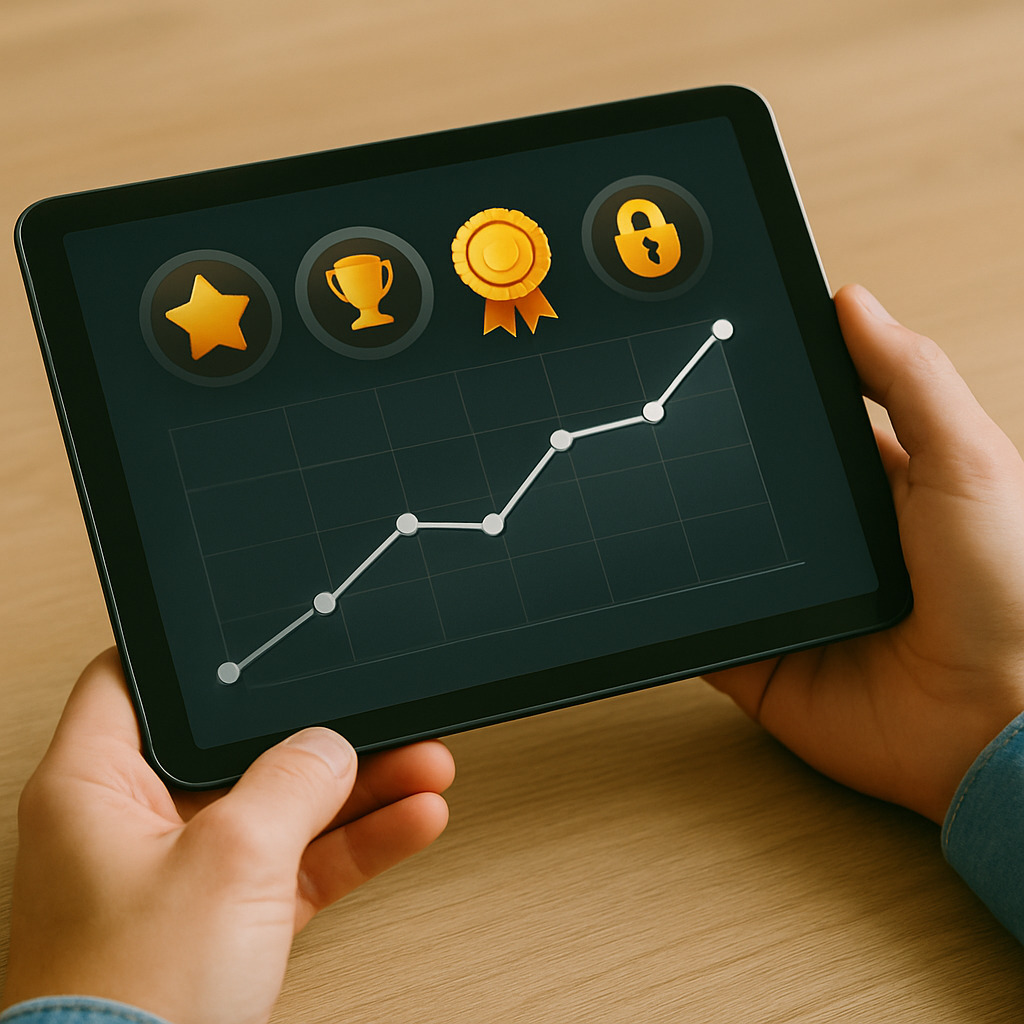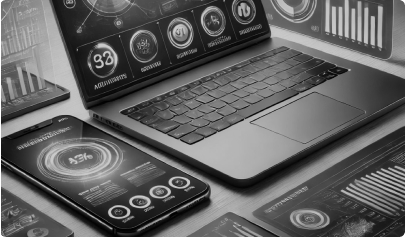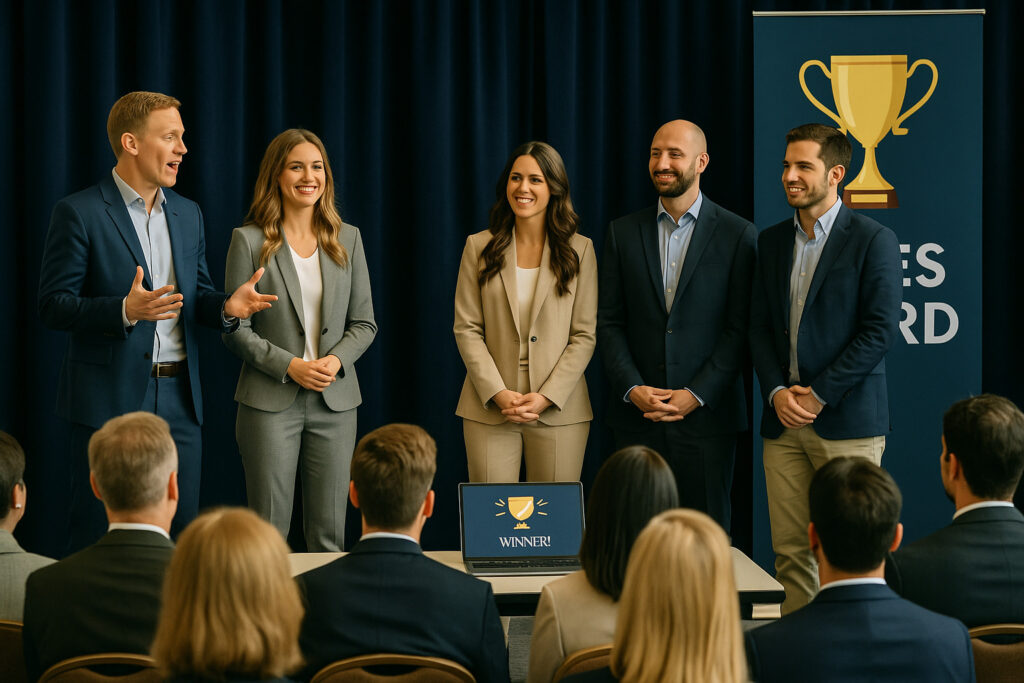Yevhen Kasyanenko: Examples and tips for gamification in network marketing
Gamification for marketing can not only attract a new audience to your business, but also keep them engaged at a decent level. That is why this tool is so powerful and useful. Today’s users are tired of traditional advertising methods and ignore them. To somehow interest customers and strengthen their trust in the company, game mechanics are used.

According to Gartner research, more than 70% of the world’s largest companies are already implementing various game mechanics in their marketing. BlooMLM founder and professional Yevhen Kasyanenko decided to share the most effective gamification methods. In this article, you will learn which game elements can be used to strengthen your marketing campaign. Find out about examples that are worth using.
What is gamification and why is it needed in marketing?
Gamification helps brands engage their audience more. Their interaction with the product will no longer be standard, but will become an interesting process. A report by Badgeville claims that over 60% of users are more likely to engage with a brand if the process includes game elements (points, ratings, virtual rewards).

Definition and basic principles
Gamification is when game mechanics are incorporated into non-game processes. Everything is done to engage customers. When it comes to marketing, gamification is used to increase user loyalty, boost engagement, and drive sales. Game elements can turn ordinary customer actions into an exciting process. This motivates them to cooperate and make repeat purchases. Bunchball data shows that gamification can increase customer activity by an average of 30–40% if the mechanics are set up correctly.
Why does gamification work?
Game elements can influence human behavior. People want to participate in the process, achieve goals, and receive bonuses. That’s why gamification is not just entertainment. With this powerful tool, you can:
- Form an emotional connection between users and the brand.
- Encourage them to work with you again and again.
- Create a sense of achievement and fair rewards.
- Foster a spirit of competition, stimulate activity and engagement.
Ratings and leaderboards create a competitive effect and increase participant activity by 20–25% (according to Badgeville). Once customers feel that what they are doing is bringing results and rewards, they will trust the company. After all, the entire process of working with the brand will be exciting for them.
Want gamification to be part of your MLM system? Want your brand to really engage users? The BlooMLM team knows how the everyday actions of partners and customers can be turned into a truly exciting game. This process will entertain, spark interest, increase engagement, and motivate growth. If gamification is done right, you will not only retain customer attention, but also generate long-term interest in your brand.
BlooMLM will develop special game mechanics for you that are tailored to your target product, audience, and business goals. The team uses levels and achievements, ratings and challenges, motivational rewards, and more.
Submit your request now to get a ready-made solution that will truly set you apart in the MLM market. This is what will inspire your partners to achieve results in business. It will make business more interesting and motivating for them.
IDEAS FOR GAMEIFICATION IN BUSINESS
The BlooMLM team has a solution for your business. Fill out the application and we will contact you to discuss the details
Leave a request
Basic game mechanics
In order to use marketing gamification, you need to think through the mechanics carefully. It should encourage customers to take targeted actions. Here are some examples of gamification in marketing:
- Points and levels – by performing specific actions, they receive rewards. They also accumulate points or unlock new levels of benefits by making purchases, recommending the company, and passing tests. In various cases, the introduction of a level system and point accumulation can increase repeat sales of goods/services by up to 15–25%.
- Leaderboards – the use of rating systems can create a spirit of competition. This will motivate customers to actively participate in the process by taking places in the TOP. In some loyalty programs, the share of active users increases by 10–15% after the launch of the “hall of fame.”
- Achievements and awards – badges, medals, virtual trophies, and other elements that allow users to feel progress and increase their engagement. Virtual trophies, badges for achievements, medals – all of these things make people want to complete quests and increase engagement by 20–30%.
- Quests and challenges – users complete tasks or pass game tests to receive prizes or discounts. In doing so, they interact with the brand in an exciting and interactive way. Example: gamified quizzes can increase the time spent on the site by 2–3 times.
It is important to approach the process of implementing game mechanics competently. Then they will become a real marketing strategy consisting of a dynamic process. In this case, the customer will not feel like an ordinary buyer. On the contrary, they will feel like an active participant in the company. This will have a positive effect on their cooperation with the brand.

Psychological aspects of gamification in marketing
To make it interesting and exciting for customers to interact with a brand, it is worth using game elements. This increases the desire to interact with the company. According to psychological research in the field of motivation (Harvard Business School), about 80% of people are more willing to perform actions that are beneficial to the brand (purchases, subscriptions) when there is an additional gaming incentive.
The engagement effect. Thanks to gaming in network marketing, users interact with the brand enthusiastically, as it arouses their excitement and desire to continue participating in the process. Participating in the life of a brand is more interesting with gamification because, unlike traditional advertising, which causes irritation, users have a positive experience of cooperation with the company. For example, if they accumulate bonuses or complete game tasks, this will encourage them to come back to you. This is how an emotional connection with the company is formed. According to DSN, this is especially true in MLM, where up to 70% of new distributors leave in the first year if they do not feel constantly engaged.
Motivation and encouragement. Gamification creates a natural desire to achieve goals and earn bonuses. Ratings, levels, and rewards activate the reward system in the brain. As a result, the user wants to repeat the same action again. For example, the Duolingo app offers daily rewards for learning a language, and fitness apps offer virtual medals that you earn when you complete workouts.
Habit formation. When a person regularly participates in a network marketing game, this behavior becomes ingrained and turns into a habit. Therefore, by incorporating gamification into your marketing strategy, you can make your brand part of your customers’ everyday lives. For example, there are loyalty programs where people can earn points for purchases, which can create an incentive to use the brand’s services again and again. Loyalty programs with point accumulation increase the retention rate by an average of 20–30% (according to Accenture).
Gamification is not just a passing trend. It is a powerful tool that delivers real results. The BlooMLM team is engaged in the implementation of game mechanics in MLM systems. This allows you to increase the motivation of partners, involve participants in the sales process, and help build an active community around the brand.
Each of the team’s solutions is tailored to the audience and the company’s goals. After all, goals can vary, from increasing the activity of newcomers to strengthening team spirit. As a result, the company not only has greater engagement, but also visible results for its business.
We invite you to check out BlooMLM’s case studies to see real-life examples of how gamification works and how it helps achieve goals. You will see how a mundane routine turns into excitement, boosts sales, and how gaming can make a business inspiring and vibrant.
CASES
Все кейсы
Onboarding of new agents was accelerated in a model with tokenized motivation
Training consistency improved thanks to gamified goals and progression

The onboarding of new agents was accelerated in a model with tokenized motivation
Training became more consistent thanks to gamified goals and progression

increase in user engagement due to interactive features, NFT protection, and rewards for activity
growth in the partner network thanks to the implementation of CRM, personal dashboards, and a tokenized motivation model
Types of gamification in marketing
There are several types of gamification of marketing.They will depend on the company’s goals, as well as the methods it uses to engage customers.
Engaging gamification in marketing. This format can be used to increase customer interest by using interactive mechanics such as quizzes, challenges, bonus systems, or virtual rewards. For example, McDonald’s has interesting gaming promotions that are similar to Monopoly. The idea is to collect cards and win prizes. This, in turn, increases user engagement. McDonald’s Monopoly-style promotions increase sales by an average of 5-8% on campaign days.
Educational network marketing game. Gamification is a good option for training employees and customers. It allows information to be absorbed effectively and in an interesting way. According to Deloitte statistics, gamification of training can improve test results by 14–20%. For example, companies operating in the corporate sector use systems with levels and specific achievements. This encourages employees to be more willing to undergo training. Educational platforms and online courses such as Coursera and Duolingo use game elements to maintain motivation.
Virtual game about network marketing. Games, challenges, and referral programs, often distributed through social networks, can encourage customers to share content or attract new customers. For example, the founders of Dropbox were able to increase their audience several times over by using a program in which participants receive additional cloud storage when they refer a friend. This ultimately reduces advertising costs and increases customer loyalty.

How brands use gamification: successful examples
Game mechanics help many companies achieve customer growth and increase their engagement with the brand.
Dropbox – bonuses for referrals. Dropbox uses a referral system with partial gamification. When users invite friends to the system, they receive additional cloud storage space. This technique increases customers’ motivation to share the service with others. As a result, the company is constantly growing. According to the company itself, this program has increased growth by 60% and reduced acquisition costs by 20–25%.
Nike+ Run Club – sports competitions. The company uses game mechanics to turn running into a competition. With the app, users can compare their results with their friends. It also gives them access to challenges and virtual rewards for achieving specific goals. Thanks to this approach, customers train more often, and the brand is associated with an active lifestyle. As a result, Nike maintains a high level of engagement, increasing sales of sports equipment by 10–15% among active participants.
Starbucks Rewards – loyalty program. Starbucks has used its loyalty program to turn standard purchases into an exciting game. Every time a customer orders something, they receive “stars” that they can then exchange for bonuses or even free drinks. And thanks to the tiered system, customers are motivated to buy more in order to receive valuable rewards. According to Starbucks reports, reorganizing the loyalty program with a focus on gamification increased the average check by 5–7% and increased participant engagement by 25%.
Yandex.Music – guess the artist. Yandex.Music took advantage of an interactive game. The essence of the game is that customers have to guess the artist who sang several tracks. If players give the correct answer, they can get a free subscription. This format not only entertained people, but also promoted paid services.
How to implement gamification into your marketing strategy?
It’s true that gamification is a powerful marketing tool. But for it to be effective, it needs to be planned and implemented correctly.
Define your goal
Before using game mechanics, you need to determine what exactly you want to achieve. Gamification is used for a number of tasks. For example, it can be used to increase sales, attract new users, retain your audience, and increase brand engagement. The effectiveness of your campaign will depend on how clearly you define your goal. According to DSN research, up to 30% of all customers in MLM companies return thanks to loyalty programs and gamification.
Choose the mechanics
Depending on your business goals and audience preferences, choose one of the right mechanics. Here are some of them that you can use:
- Points and ratings are a good option for loyalty programs. This will motivate customers to make repeat purchases.
- Quizzes and challenges will attract attention on social media, increase engagement, and organic reach.
- Quests and achievements will keep customers interested for a long time and increase their loyalty to the brand.
Integration into your marketing strategy
Game mechanics can be used in different channels when working with customers. For example, you can apply them in mobile apps, websites, social media, or newsletters. It is important to ensure that the participation process is simple and convenient. Then users will understand the benefits they can get.
Process automation
Constant monitoring and updating are important for gamification. To automate scoring, track achievements, and manage loyalty programs without placing an additional burden on the business, it is necessary to use CRM systems, marketing platforms, and specialized services.
The BlooMLM team is ready to offer you competent approaches and solutions to help you reach new heights. To see how effective these methods are, read the reviews of those who have already worked with our specialists.
These real-life stories show how the team helped build an effective business system, automate processes, and implement innovative mechanics, including gamification. These reviews show that each project is unique. BlooMLM takes an individual approach to each client. See how the specialists’ solutions have transformed businesses, increased partner engagement, and helped each of them strengthen their market position.
CUSTOMER FEEDBACK
MoreMistakes in implementing gamification
If serious mistakes are made when implementing game mechanics, even if they are creative, they will not produce good results.
Here’s why:
- Excessive complexity. Users quickly lose interest in game processes that are difficult to understand. If the rules are too confusing, up to 70% of users may abandon the game at the start (according to Gartner). The best solution is to use simple and understandable mechanics, replacing confusing schemes with a large number of conditions.
- Lack of real value. Participants should receive tangible bonuses from the game process, such as discounts, gifts, or exclusive privileges. Users are not interested in participating when the rewards are not very attractive. Without this, more than 50% of customers stop participating in gamified programs (according to Accenture).
- Ignoring analytics. It is difficult to understand the effectiveness of gamification without analyzing metrics such as engagement, conversion, and average check. Conversely, it is easier to make adjustments to the strategy and improve results if you constantly monitor the data.
Gamification in marketing – an effective tool
Gamification in marketing is not just a fad. It can be used as an effective tool to help companies stand out from their competitors. Gamification also increases audience engagement and can boost sales. If you develop a strategy based on user psychology and competent game mechanics, it can yield good results. According to various studies, competently implemented game mechanics can increase customer engagement by 20–40% and increase repeat purchases by 15–25%.
With the help of the BlooMLM team, led by Yevhen Kasyanenko, you can develop and implement games in network marketing. The team will help you adapt it to the specifics of your business. So contact us now to sign up for a consultation and develop a strategy that will lead your company to growth!
Gamification with the BlooMLM team can turn ordinary business tasks into an exciting process. Your partners will appreciate it. They will be able to enthusiastically engage in the development of the MLM network. If you are interested in this approach, we suggest implementing game mechanics into your company’s strategy right now.
With BlooMLM, you will have a whole gamification system developed. This is what will bring you tangible results. It is thanks to gamification developed by professionals that it is possible to inspire a team, stimulate its growth, and motivate it to take further action.
Ready to take the first step? Then leave a request. The BlooMLM team will offer you a solution that can increase your partners’ involvement in your business and achieve real results.







